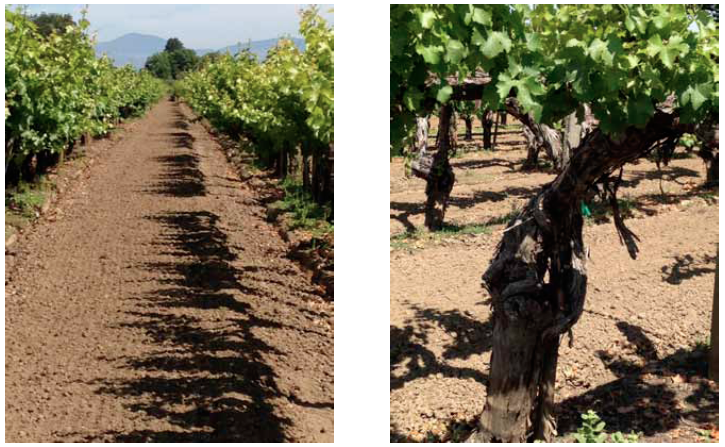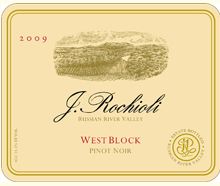Rochioli Vineyards & Winery West Block
Spending an hour with Joe Rochioli, Jr., was a highlight of our trip. A humble, but proud man, Joe possess an
indefatigable devotion to his vineyard and his personal history is marked by numerous notable achievements
that inseparably link him to the history of winegrowing in the Russian River Valley. Now 81 years old, and
hobbled by recent knee surgery, he still is active in the management of his vineyards. Considering he grew up
in a very poor Italian-American immigrant family that lived completely from the land, struggled in the early years
of school because he could not speak English, it is remarkable that was able to initiate a remarkable number of
viticultural innovations that led to his unprecedented success and notoriety in the wine industry.
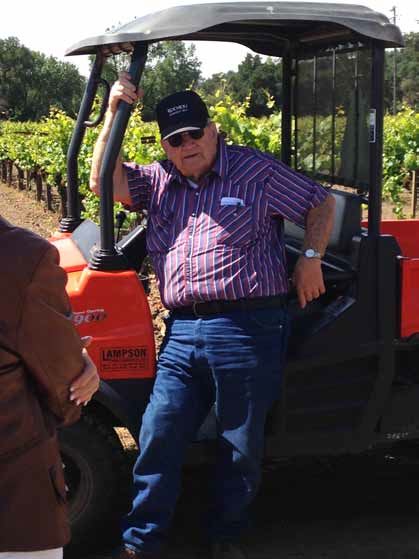
To understand the significance of Rochioli Vineyard West Block, it is important to review the historical
circumstances that led to the planting of this vineyard. The Rochioli family arrived in the United States in 1912.
Joe’s father, Joe, Sr., was sent to an orphanage at a young age, and since he had no name, he was given the
name “Rochioli,” a word in Italian that had no meaning. Joe, Jr., was born in Sebastopol in 1934, and four
years later the Rochioli family moved to the 125-acre Fenton Acres ranch adjacent the Russian River in
Healdsburg where Rochioli Vineyards is located today. The farm was initially leased to Joe, Sr., who eventually
bought portions of the ranch over time. The large farm was planted to hops, fruit, grapes ( a typical Italian field
blend of Alicante Bouschet, Zinfandel, Petite Sirah, Sauvignon Vert and Black Malvasia), prunes and
vegetables. By age 12, Joe, Jr., was doing a man’s work, lifting 60 pound sacks of hops in the hop kiln.
When the hops business declined in 1953, hops were taken out and Blue Lake string beans planted and soon
Joe, Sr., became one of the largest string bean growers in California. The old grapevines that dated to the
1890s were ripped out in 1957, and French Colombard was planted with two rows of beans planted on stakes
between each row of grapevines.
By the time Joe, Jr., returned from attending college at Cal Poly San Luis Obispo in 1959, Joe, Sr., had
acquired the entire 162 acres. Joe, Jr., had read and researched grape varieties, and wanted to plant additional
vinifera varieties, but his father and uncle were reluctant because wine grapes produced small crops and only
returned $50 to $70 a ton at the time. Joe, Jr., finally talked his father into planting Sauvignon Blanc in 1959.
(Cabernet Sauvignon was also planted but did not perform and was pulled out in the 1970s) Joe, Jr., traveled
to the University of California at Davis in a 1947 Ford pickup to look at Sauvignon Blanc that was planted there
to multiple clones. He walked the rows and tasted the grapes, finally deciding on one particular row where the
grapes tasted the best. 10 acres of Sauvignon Blanc were planted and today, Rochioli Sauvignon Blanc has
won more awards than any other wine Rochioli produces. The clone at Rochioli Vineyard forever remains a
mystery as the Sauvignon Blanc vines at the University of California at Davis were eventually pulled out.
By the early 1960s, farm labor was difficult to find and the string beans had all been pulled out at the ranch.
Joe, Jr., begged his father and uncle to try Pinot Noir. He had done enough research to indicate to him that the
grape would do well on the Rochioli ranch. Joe, Jr.’s father wanted to plant “early Burgundy,” a Gamay clone
that was vigorous and more profitable, but produced wines that were more like a rosé.” Joe, Jr., said, “No way
was I going to plant that stuff!”
After Joe, Sr., died in 1966, Joe, Jr., used a tractor to pull out the French Colombard and some Cabernet
Sauvignon that had been planted, and planted in their place Pinot Noir. His neighbors thought he was crazy.
Since there was no Pinot Noir budwood readily available, Joe, Jr., sought out a Frenchman who had plantings
south of St. Helena in the Napa Valley. He was met with resistance from the owner who reluctantly gave him
some “suitcase” Pommard budwood from his vineyard.
In 1968, Joe, Jr., planted 4 acres of Pinot Noir in what was to become known as East Block, named for the
area east of the telephone pole on the property. This was one of the earliest plantings of Pinot Noir in the
Russian River Valley. In 1969, he acquired the shares of the ranch owned by his brother and sister, and
became the sole owner of Rochioli Estate. In 1970, 4 more acres of Pinot Noir were planted in what has
become known as West Block, using budwood from Karl Wente’s estate vineyard in Arroyo Seco (Joe, Jr., told
me the year was 1970, but many references and the winery’s website state the year as 1969). Joe, Jr., says
that he insisted that Wente sell him cuttings from his most special French Pinot Noir vines and he paid 10 cents
a bud, a huge expense at the time. A team from University of California at Davis has looked at the original Pinot
Noir plantings at Rochioli Vineyards, and determined that they are one or more Pommard field selections.
The West Block plantings were typical for the era with a 14 foot spacing between rows and 8 foot spacing
between the vines (see current photo below). The rootstock is phylloxera resistant AxR#1.
West Block is often referred to as the “mother block” because cuttings from this block were subsequently used
to establish several other Pinot Noir blocks on the Rochioli ranch, Allen Vineyard across Westside Road from
Rochioli Vineyard (first planted in 1970 with later plantings from West Block), and many other vineyards in the
Russian River Valley.
The heavily virused East Block vines were completely replaced with West Block cuttings after the 2008 vintage
and a number of vines have been replaced in the West Block as well. West Block is now one-third its original
size.
In 1979, Joe, Jr., began selling some West Block Pinot Noir to Williams Selyem, before that famous winery had
become bonded. Burt Williams recalls that Joe, Jr., sold him the Pinot Noir grapes for $550 to $600 a ton.
Williams Selyem made Rochioli Vineyard famous, when in 1987, the 1985 Williams Selyem Rochioli Vineyard
Russian River Valley Pinot Noir, made from West Block grapes, won the Sweepstakes at the California State
Fair Competition and became one of the most seminal wines in the history of California Pinot Noir. Williams
Selyem continued to source West Block grapes until the winery was sold in 1997, after which time Williams
Selyem received grapes from the River Block section of Rochioli Vineyard. Cuttings from West Block are no
longer given away or sold. A beautiful cluster of West Block Pinot Noir is shown below:
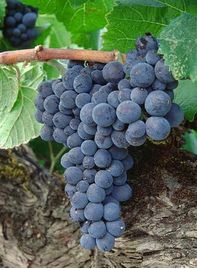
A J. Rochioli West Block-designated Pinot Noir was first offered in 1999: 400 cases, $65. Current production is
about half that amount, and the price has risen to $125. The wine is allocated to devoted mailing list
customers. Your best option is to buy the wine on the secondary or auction marketplace.
Tasting at Rochioli Vineyards & Winery:
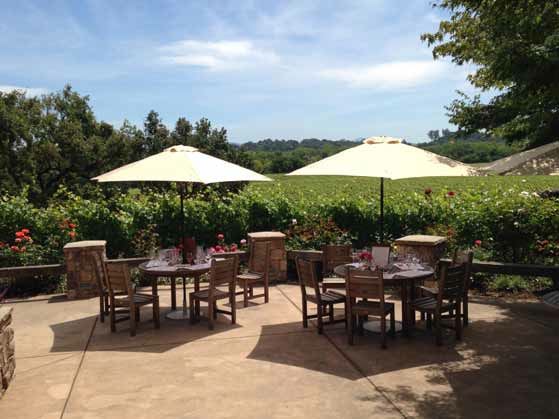
2011 Rochioli Russian River Valley Blanc de Noir
12.5% alc., $60. Inaugural bottling. 100% Pinot Noir.
·
A
superb sparkling wine with a fine bead, a thoroughly dry and refreshing palate, and a clean, refreshing finish
that mixes citrus and berry notes. This unique wine is sold through the tasting room currently.
Score: 92
2014 Rochioli Estate Russian River Valley Rosé
$28. 100% Pinot Noir.
·
This is a substantial rosé with plenty
of strawberry, cranberry, cherry and peach fruit to satisfy. It is crisp and bright but has enough fruit and
structure to pair with substantial foods.
Score: 89

2014 Rochioli Estate Russian River Valley Sauvignon Blanc
14.5% alc, 1,380 cases, $28. Original 1959 planting accounts for 44 percent of this wine.
·
This gorgeous wine
offers an explosion of fruit on the nose and palate including lemon and white peach with accents of
verbena and herbs. Very little, if any, grassiness. Fresh and satisfying with uncommon length on the
finish. An Old Vine Sauvignon Blanc is also offered produced solely from plantings established in
1959. ($48).
Score: 92
2013 J. Rochioli West Block Russian River Valley Pinot Noir
14.3% alc., $125.
·
Moderately dark reddish
purple color in the glass. The nose is highly seductive, with bright aromas of Bing cherry, purple grape, cola nut
and cake spice. Stunning entry and mid palate exuberance with plenty of intense black cherry fruit flavor that
really perks up the senses. Luscious, but not the least bit jammy, with balanced fine-grain tannins, a very
appealing smooth texture, and notable old vine persistence on the finish. When tasted the following day from a
previously opened and re-corked bottle, the wine still had plenty of showy, intense cherry fruit with a hint of
sassafras and cola. A well-bred, special wine with a pedigree.
Score: 92-93
2001 J. Rochioli West Block Russian River Valley Pinot Noir
14.2% alc., 400 cases, $65. Brought to the
tasting from my cellar.
·
Slight bricking of rim. The wine has aged nicely, offering notes of leather, fig and
burnished cherry on the nose. The tannins have softened, the wine is silky in texture, and offers a savory herb,
spice and black cherry profile. Best to drink up but will hold a few years.
Score: 90




